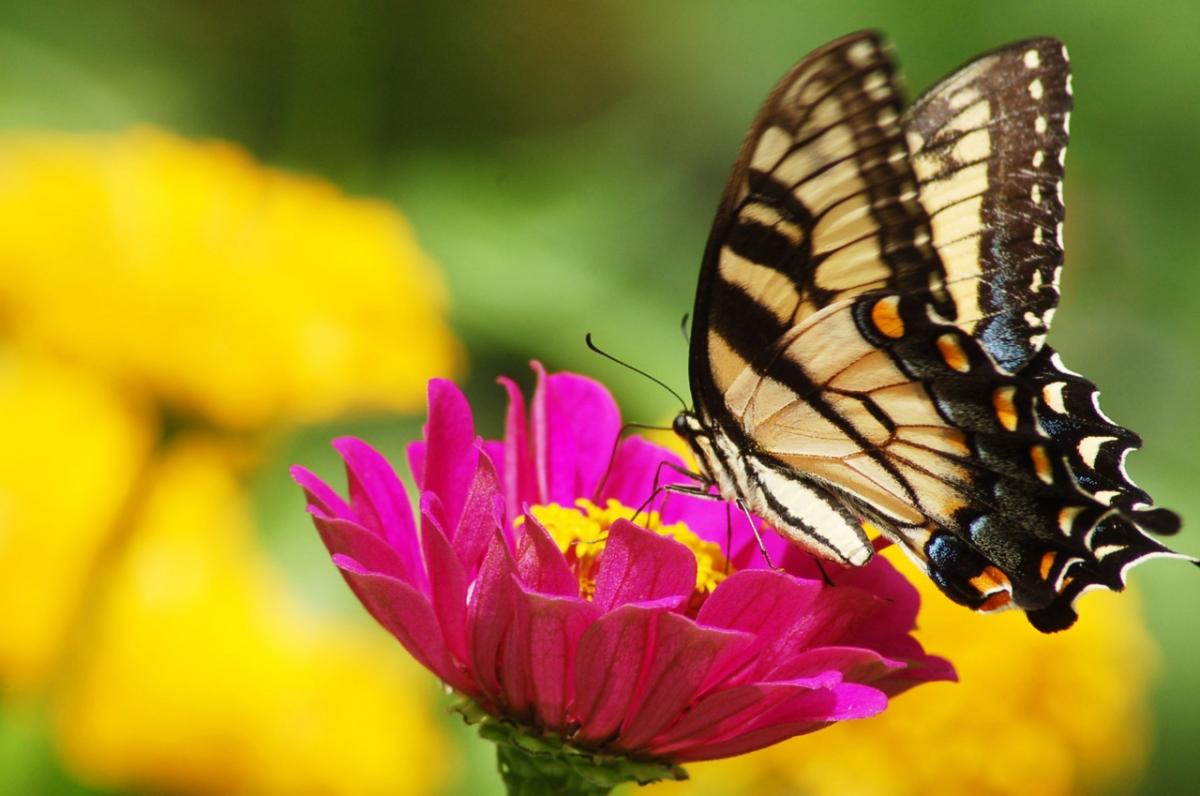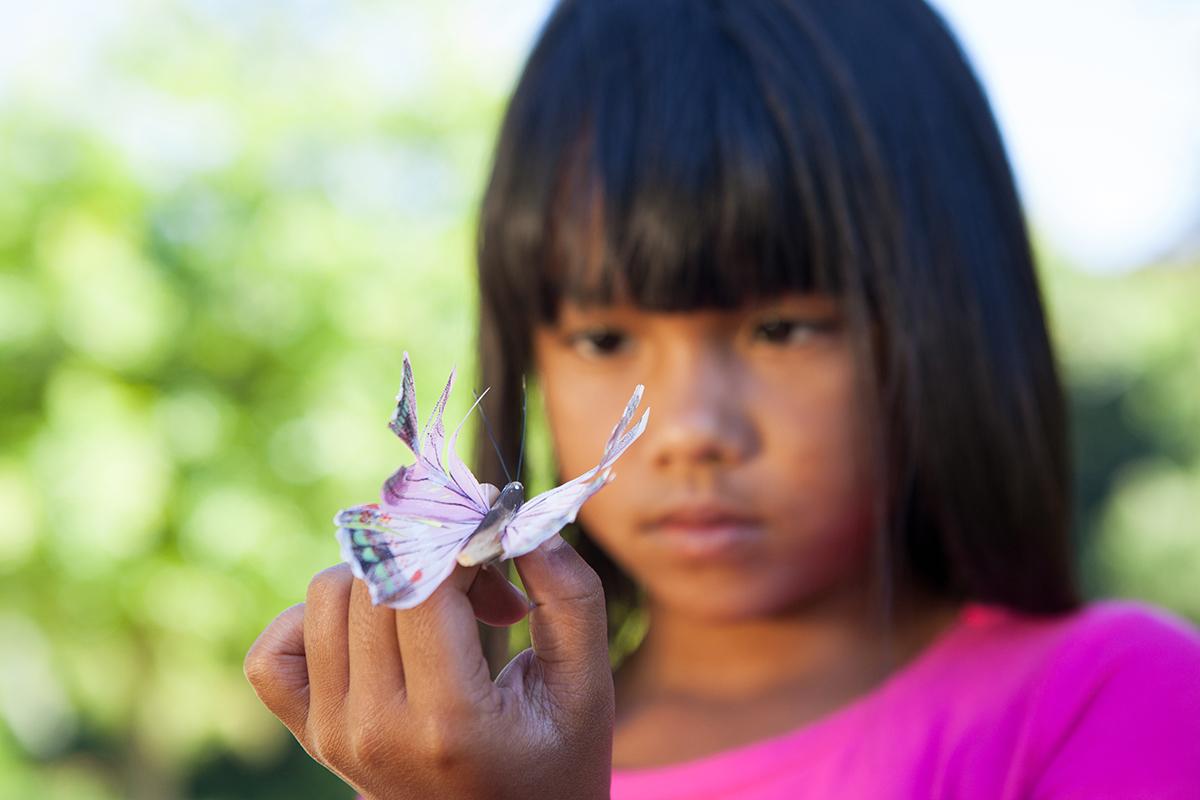Protecting Pollinators: Our Purpose Drives Our Commitment
Pollinators are the gardener’s best friend. And they play a critical role in maintaining the health of our ecosystem and the world’s food production. However, due to many factors, our pollinator populations are declining around the world. At ScottsMiracle-Gro, we are passionate about protecting these essential creatures that help our gardens and our communities thrive. It’s an important way we live out our purpose to GroMoreGood for the environment.
I sat down with Jodi Lee, Vice President of Marketing at ScottsMiracle-Gro, to get her insights on our Pollinator Promise commitment and how gardeners at home can help.
Tell us about your role at ScottsMiracle-Gro.
I’ve been with the company since 2013 and have held various roles since then. For the past several years, I’ve had the opportunity to help lead our controls business, which includes weed and bug control products. It’s a unique and complex business. We always say, no one wakes up and thinks “I want to buy a pesticide today.” But they do want to protect their families, their homes, and their outdoor spaces. So we provide product options that help people accomplish that, with their family’s safety top of mind.
What is The Pollinator Promise?
The Pollinator Promise is our enterprise-wide commitment to support and protect pollinators. Some people may think this is a contradiction, that a company providing bug control products wants to protect pollinators. But we think the exact opposite is true. We know it’s our responsibility to make sure our products are used correctly and that we’re doing our part to help keep pollinators safe.
The Pollinator Promise commitment comes to life in several different ways across our business, and it starts with our products. In 2016, we announced our Ortho® brand would remove all Neonicotinoids (or “Neonics”) from our outdoor garden products to help consumers be more bee-friendly. Today, none of Ortho’s outdoor garden controls are produced with Neonics. We were the first and still the only company to do this for its gardeners.
Another big piece of this commitment is consumer education. We work to teach homeowners and communities how to create pollinator-friendly spaces in their own backyards and how to use pest control products responsibly, to avoid harming pollinators. Our Foundation also provides funding to leading environmental organizations, such as the National Recreation and Park Association, and grants to communities for much-needed pollinator habitat creation across the country.
What prompted the decision to remove Neonicotinoids from our products?
We are always looking for ways to evolve, to be better, and do more. We also know gardeners are looking for ways to sustainably care for their backyards and gardens. When the question of Neonics and its potential impact on pollinators came up, we wanted to eliminate any concern that our products might contribute to the problem. We view it as our responsibility to provide gardeners with effective solutions that they know are safe for their families and the environment when used as directed.
I imagine this was a time-consuming process. How long did it take?
We committed to removing Neonics from our outdoor garden products by 2021. But we removed them by 2019, a full two years ahead of schedule. We were able to find alternative chemistries, which we’re really excited about, that enable homeowners to more closely target their product application and minimize exposure to pollinators.
Were there challenges along the way?
One of our biggest challenges was one we had little control over. We sell our products through several different channels, including online. Sometimes, what’s called a “third-party seller” will purchase inventory of a product and then resell it. We found that some of our previous Neonic products were being sold online from a third-party seller after we had eliminated them from production. And so, we work actively with our retail partners to ensure these products are being removed for purchase.
How can consumers find Neonic-free products?
Unfortunately, this is more difficult than it should be. The Environmental Protection Agency (EPA) has very specific guidelines on what information can appear on a product label. At this time, we are not able to call out Neonic-free products. Consumers should look carefully at the ingredients on the product’s label to determine if it contains Neonics.
What can readers do at their homes to help protect pollinators?
I love sharing pollinator-friendly tips with homeowners. Here are the top three tips that I would recommend.
- First, use the right product responsibly. If needed, make sure you are using a pollinator-friendly product, such as Ortho® Bug B Gon Eco Insecticidal Soap, which is Neonic free. Carefully follow the label instructions. Use it when pollinators aren’t active, such as in the early evening, and don’t spray plants when they’re in bloom.
- Second, plant more blooms. Pollinators need more habitat. Fill your yard with flowers in a rainbow of colors, and choose plants that bloom at different times of the year so you’ll have blossoms throughout the growing season. You can learn more about how to attract pollinators in this article.
- Third, spread the word. If we all do our part, we can make a difference. Tell your neighbors, family, and circle of friends about this issue. Research different pollinator organizations––there are a few linked on our website to get you started––and consider supporting them. Follow them on social media and share their stories and information with your followers to help educate more people and encourage them to take action.
Protecting pollinators is another way we GroMoreGood for our communities and the environment. Learn more about our Pollinator Promise.



